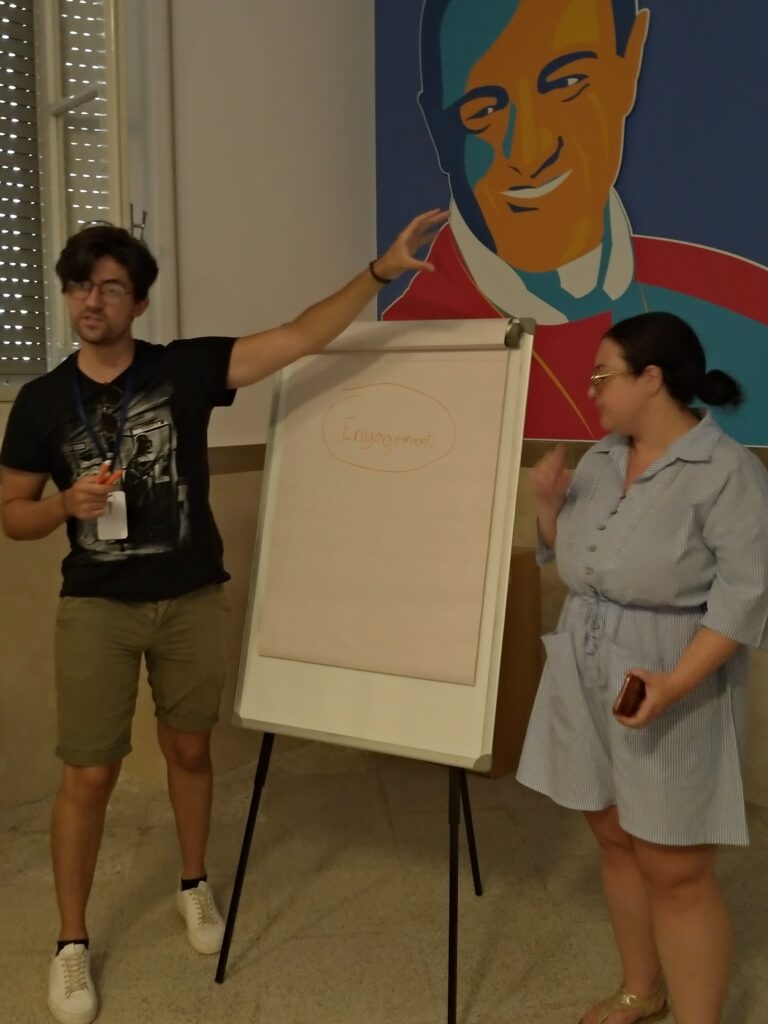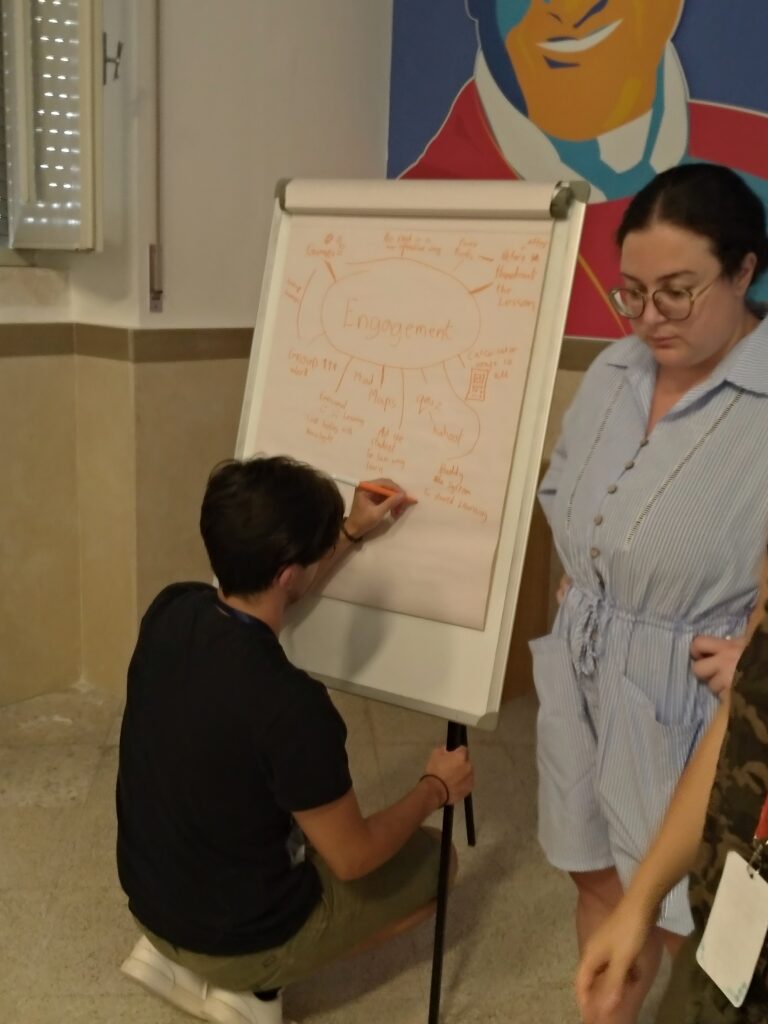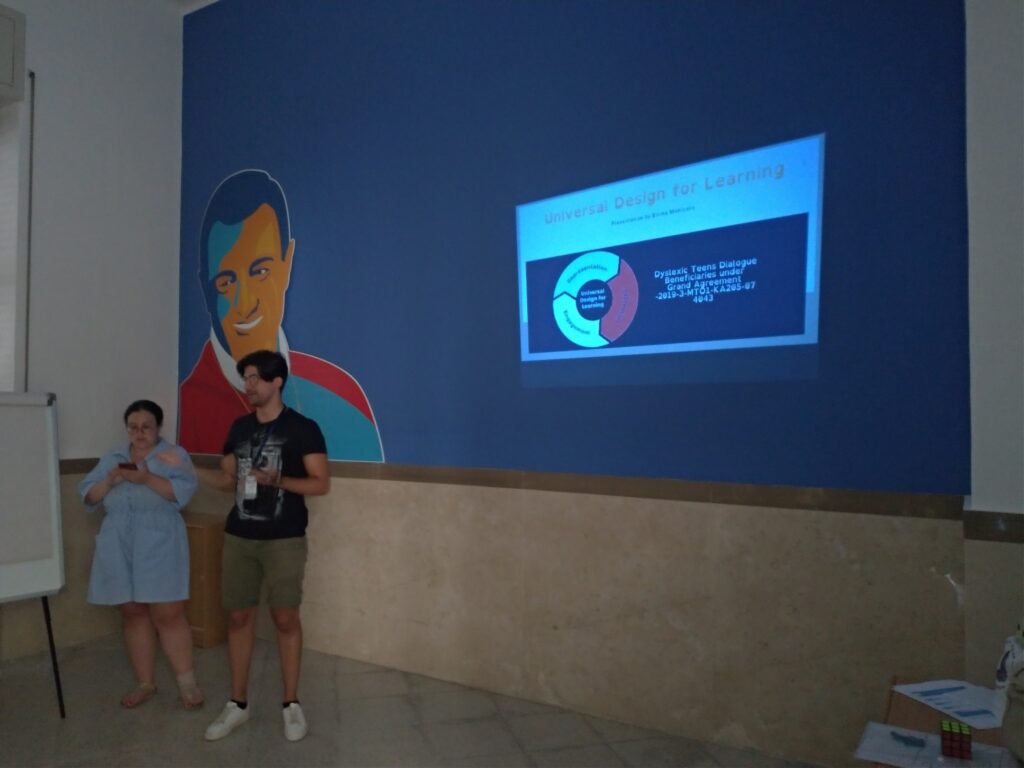by Emma Manicaro, Judy Magri and Michael Formosa
During our Erasmus+ project days in Italy, activity C2, we presented this power point presentation to the MT/IT group. We enjoyed learning how UDL ensures that all learners are included by using the 3 principles of Representation, Expression and Engagement.
We had a group discussion about the many ways of Representation, Expression and Engagement which can be used to make sure all learners and ways of learning are included in the classroom or lecture hall or youth group settings.
Here below are some photos taken during the workshop during an interactive session with the other participants. There were many contributions on how educators could use engagement, representation and expression to ensure that all students are included and can benefit during lesson or lecture time.
Scroll down to read our suggestions on how educators can achieve this!


Engagement
- Limit reading during lesson time and teach in an interactive way
- Use of powerpoint presentations
- Handouts given before and after the lesson
- Calculators allowed to all students
- Use of online quizzes such as Kahoot
- Encourage the use of a buddy system
- Sharing of learning resources ex through a shared drive
- Accessible resources on drives for all students
- Ask students for two way learning
- Use of mindmaps
- Link learning with feelings e.g. through fostering emotional intelligence
- Focus on learning to learn from a young age, before senior school
- Include group work
- Group brainstorming
- Use games in groups in class and online games
Expression
- Use multi-sensory methods
- Teach memory techniques such as using points or highlighting keywords in bold
- Use crosswords
- Use examples from our lives so teaching and learning can be relatable
- Ask students for feedback using tools such as PMI (plus, minus, interesting), rating (likert scale) or through surveys
- Use hands on learning by getting students to create, experiment or use tools for learning.
Representation
- Use mock tests
- Use constructive classwork and feedback by ungraded comments, compliment sandwich by both students and teachers
- Smaller classes for better attention
- Use presentations (varied)
- Use drama in the classroom e.x. plays or role plays
- Use conversation (Socratic dialogues for teaching and learning)
- Use relatable and applicable information
- Use more interactive methods such as oral exams or informal student enquiry
- Exams should be built so students can show multiple strengths such as including a written element with a visual component such as a power point presentation
- Provide anonymous feedback to reduce student embarassment
- Provide clarifications together with feedback



